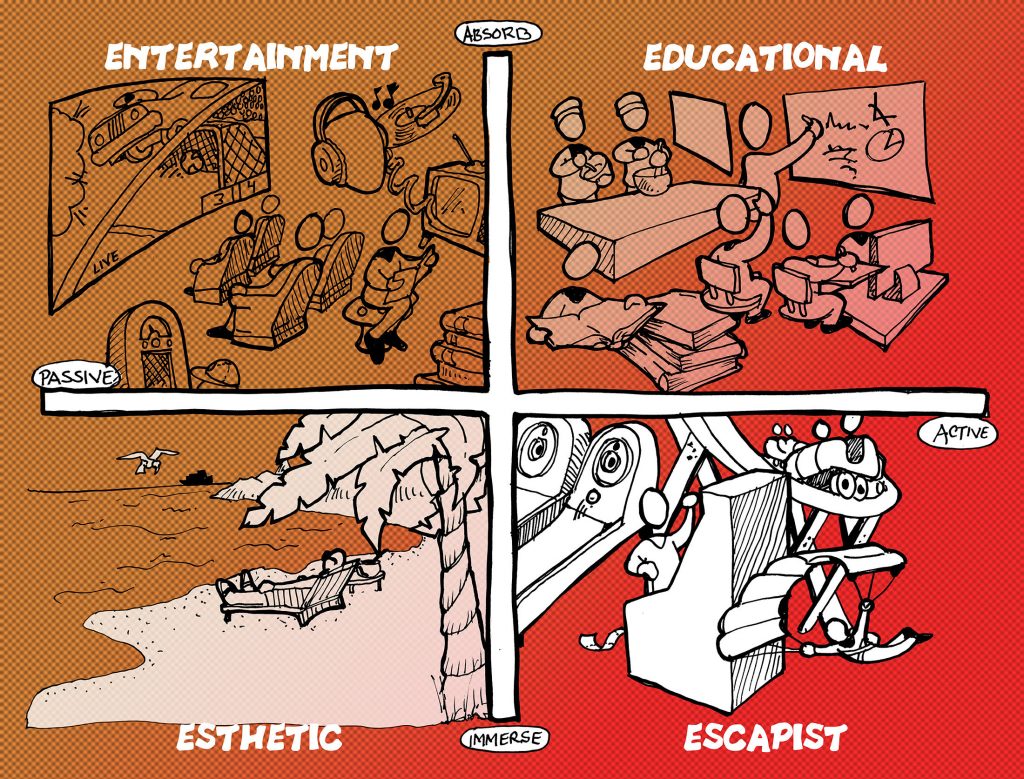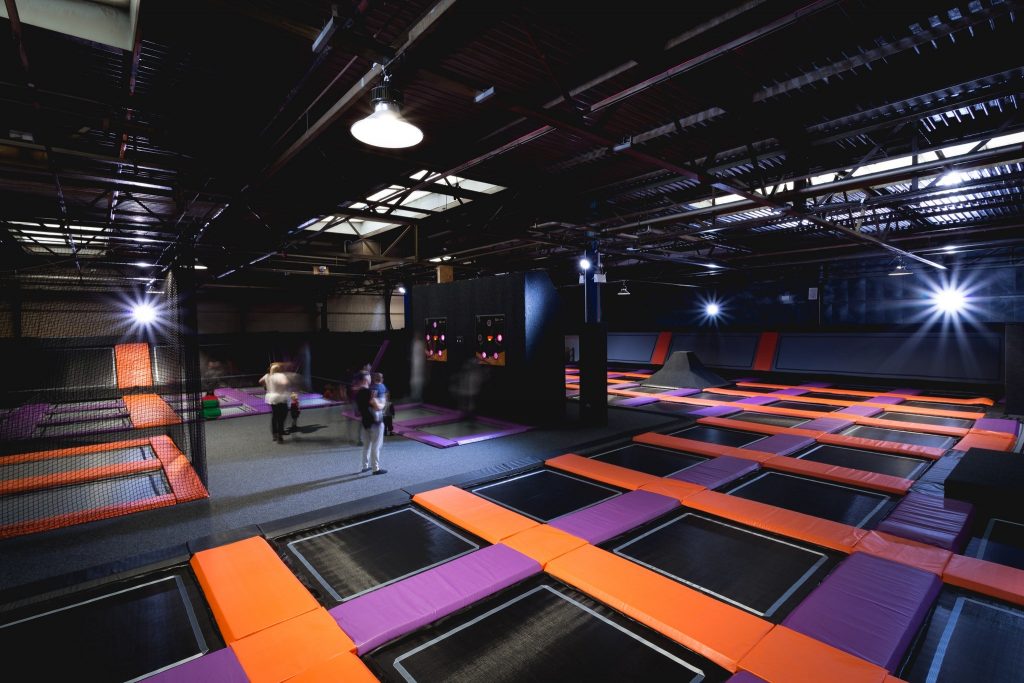Experience expert Kevin Dulle on the subtle but important difference between ‘entertaining’ and ‘entertainment’, and why Family Entertainment Centers (FECs) need to be living up to their names by upping their entertainment offerings.
Entertainment centers come in many forms. Most market themselves as entertainment venues, yet the reality is that they’re not really an entertainment experience.
Sure, they can be entertaining for customers – but as entertainment experiences go, they lack some major design and staging issues to make them worthy of the name.
There’s a lot of word swapping happening within the experience design community and entertainment industries that may be the source of all this confusion. Those words are ‘entertainment’ and ‘entertaining’. Many marketing efforts use these words as somewhat interchangeable. This is where some clarity is needed.
The Four Forms Of Experiences
The confusion lies in the usage of verb versus noun and active versus passive involvement. (Don’t worry, this isn’t a feature on grammar, but rather an article on design and application to create an entertainment experience.)
In the Experience Economy and the world of experience design, entertainment is only one of four forms of experiences. It is uniquely defined along two distinct perimeters of customer activity and proximity. Entertainment is defined as being that which is passively absorbed by the customer, rather than an active involvement with the content or environment.

A live theatrical performance is a good example of an entertainment experience. The audience watches the performers, but is not involved in the perfomance’s existence or the creation of the material. The audience can only watch from their seats as the acts progress. The audience is passively viewing or absorbing what has been or is being created in front of their eyes.
For Entertainment Centers, most are not designed to have an audience watching the activities that other customers are engaged in. In fact, I’d go as far to say that this is discouraged and designed out of the experience. Entertainment Centers are designed more around the active involvement of the customer in various activities than that of catering to the onlooker.
The customer involvement in activities is what is described as ‘entertaining’. In the world of experiences, this active participation is defined as either being educational, where the customer is actively absorbing information, or escapist, where they are actively immersed in an activity. In the educational experience the customer is learning a new skill or knowledge and in the escapist experience the customer is involved in something that they normally wouldn’t be doing in their daily routine.
Entertaining Vs Entertainment

As the adage states, all ponies are horses, but not all horses are ponies. The same could be said about experiences. Most experience centers are entertaining, but being entertaining does not define an experience. Among the FECs that miss the true ‘entertainment’ experience are Bounce in Long Island and Fantasy Island in the UK.
Both use the word ‘entertainment’ in their name, but use ‘amusement’ in their description, which makes them ‘entertaining’ not entertainment. There is a subtle shift happening that is addressing this gap via venues like ‘The Main Event‘. Vegas casinos, Disney resorts and Dave & Buster’s locations on the other hand, offer the full gambit of experiences, including entertainment. It’s interesting to note that none of the above refer to themselves as Entertainment Centers.
How To Make Entertainment Entertaining

One solution to this dilemma of ‘entertainment’ versus ‘entertaining’ is to alter the design or staging of Entertainment Centers to include an entertainment experience, either by incorporating a passive absorption such as a theatre or cinema, or designing for the spectator, creating a space where a passive observer can view the activities of others.
Think about sporting events, where the spectators watch the action from a distance and have little to no influence over the performance. An Entertainment Center could design an entertainment experience where the customers could watch other customers as performers, making the act of observing an entertaining experience.
Entertainment centers could be more experiential if they created various types of experiences and designed for the different types of customers that pay admission. Design for the active and the passive customer, as well as allowing them to immerse or absorb content as they choose. Doing this would make entertainment centers both entertaining and an entertainment experience.
Do you know of any good examples of FECs with a strong entertainment offering? Or FECs that need to up their entertainment game? What kinds of passive entertainment do you think these venues should be offering their guests to enhance the customer experience?
Join the conversation over on My WXO and tell us your thoughts.
To get more insights from experts in the Experience Economy – and to be the first to know about our membership programme, events and more – apply to join the WXO community now.





